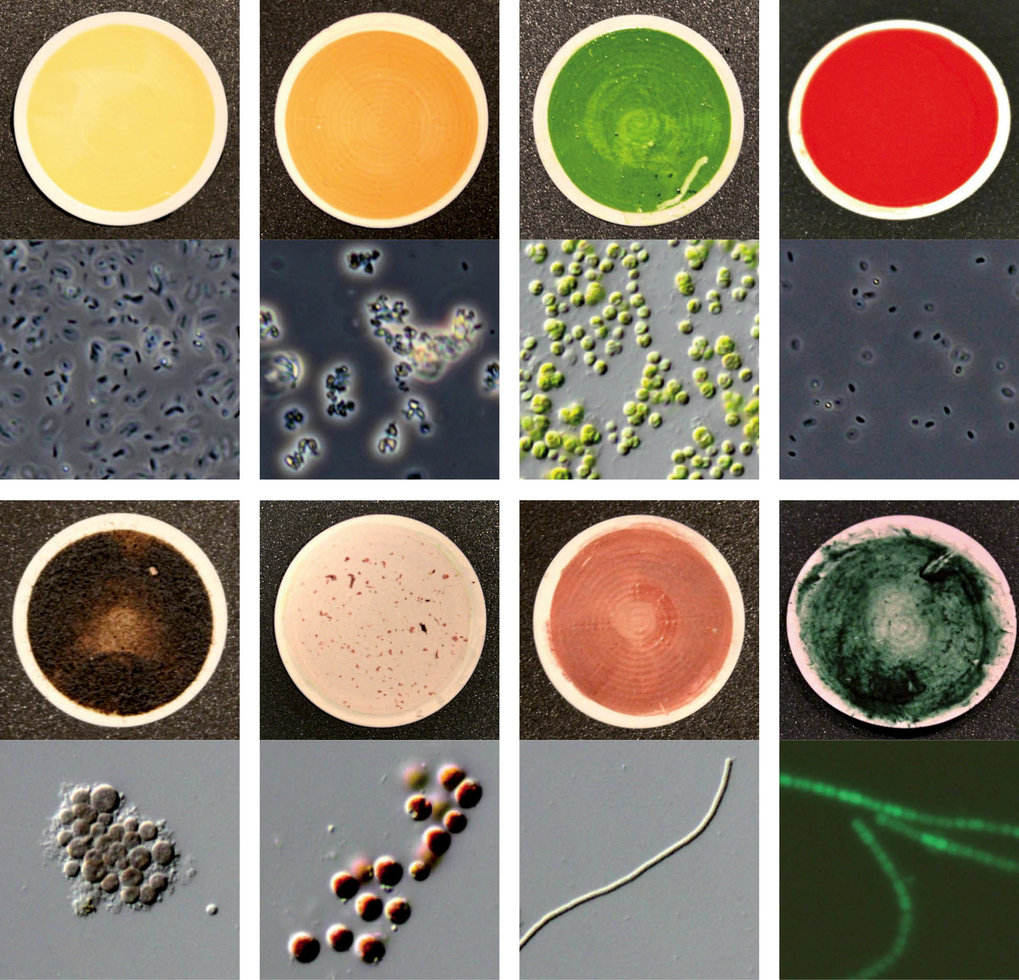Max Planck Institute for Astronomy | 2015 Mar 16
Astronomers and biologists led by MPIA graduate student Siddharth Hegde have measured the "chemical fingerprints" of 137 different species of microorganisms. This could help future astronomers to recognize life on the surface of exoplanets (planets outside our solar system). Some of the microorganisms hail from the most extreme environments on Earth; taken together, the samples should allow for a (cautious) estimate of the diversity of biological colors on planets other than Earth. The results are available in an online catalogue and have also been published in the Proceedings of the National Academy of Sciences of the United States of America (PNAS).
- [i]Eight of the 137 microorganism samples used to measure biosignatures for the catalog. In each panel, the top is a regular photograph of the sample and the bottom is a micrograph, a 400x zoomed-in version of the top image. The scientists were aiming to achieve diversity in color and pigmentation. [b](Credit: Hegde et al. / MPIA)[/b][/i]
Astronomers are gearing up for a new phase of research on exoplanets (planets outside our solar system), teaming up with biologists to formulate search strategies for life on these distant planets. So far, these efforts have focused on what are known as indirect biosignatures, such as byproducts of life that could be detectable in a host planet's atmosphere.
But if the surface of an exoplanet were dominated by one particular life form, a more direct form of detection might be possible: a detection based on light reflected by that life form, taking on a characteristic tint in the process.
We observe planets by studying starlight reflected off their atmospheres or surfaces. When Jupiter or Venus shines brightly in the night sky, the light you see is sunlight reflected by those planets. Alien astronomers making detailed observations of Earth would notice a greenish tint as sunlight reflected by trees and other vegetation reaches their telescopes.
Similarly, the presence of an alien organism covering large swathes of an exoplanet surface could be measured directly through the imprint left by the organism's pigmentation, the chemical makeup that determines its color. This imprint is the reflected light's spectrum: the light split up, rainbow-light, into component colors. It is the chemical analogue of a fingerprint, allowing for the identification of different types of microorganisms. ...
Colorful life-form catalog helps discern if we’re alone
Cornell University | 2015 Mar 16
Surface biosignatures of exo-Earths: Remote detection of extraterrestrial life - Siddharth Hegde et al
- Proceedings of the NAS (online 02 Feb 2015) DOI: 10.1073/pnas.1421237112 (pdf)
